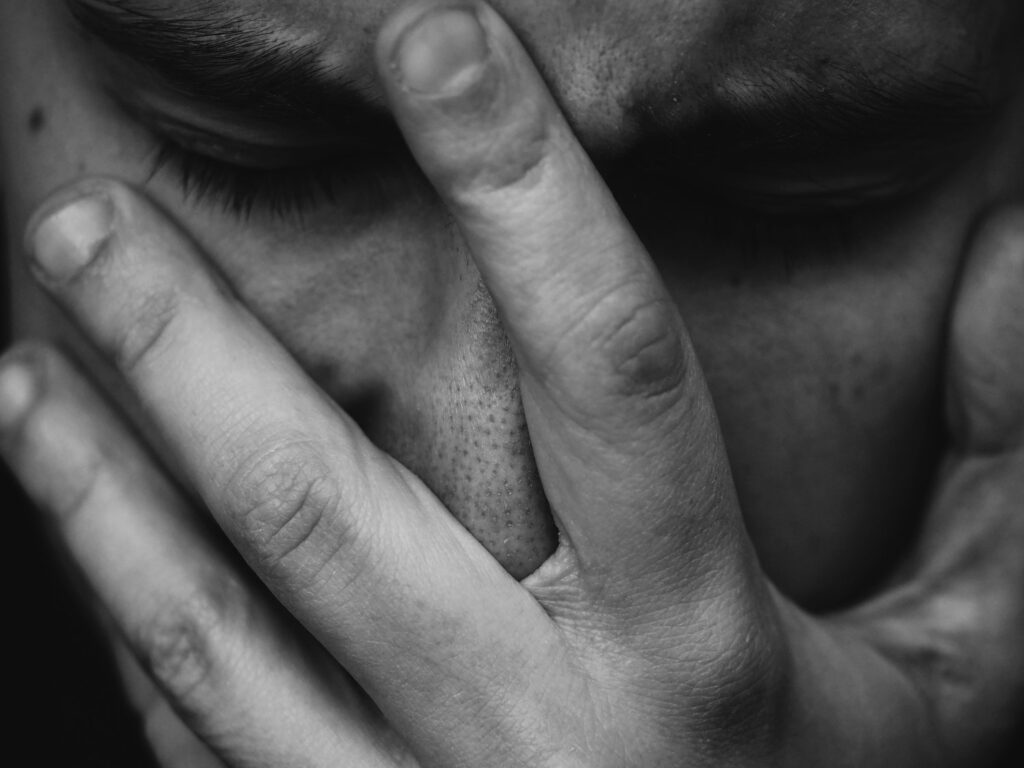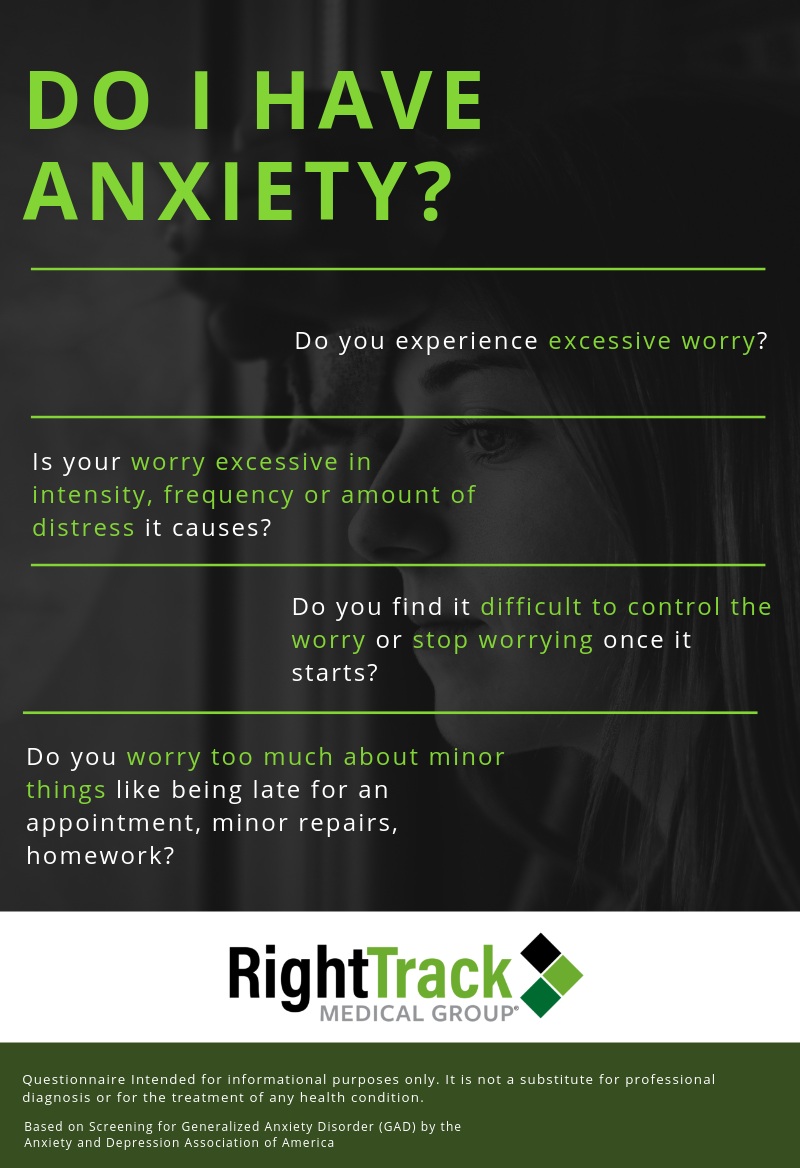Anxiety is characterized by nervousness, worry, and fear that is intense and ongoing, affecting a person’s functioning. Specifically, the fear is excessive and experienced as a person’s emotional response to a real or perceived threat. Such intense worry and fear have emotional, physical, and behavioral consequences that can severely impact an individual’s life as well as the lives of their loved ones.
If you think you or someone in your life might be suffering from an anxiety disorder, you are not alone. Anxiety disorders are the most common mental illness in the United States. In fact, over 40 million people suffer from an anxiety disorder. At some point in their life, 40 percent of adults will experience an anxiety disorder.
One way to understand anxiety is to consider anxiety as a normal emotion. In fact, it is a normal response when someone is truly in danger. For instance, pausing before you cross the road is a good thing. That pause allows you to be wise in a dangerous situation. When we are in danger, our brains and bodies react in a fight, flight, or freeze response. We either want to run, become aggressive, or freeze. These are survival responses when we are in true danger. Yet, anxiety causes people to be in this state of high alert a lot of the time. In this way, it is like a fire alarm is going off in your min,d and yet often there is no real danger.
In discerning a possible anxiety disorder from normal anxiety, consider the source of the worry and fear, and then reflect on whether your response and experience are proportional to it. For instance, it is natural to have some degree of anxiety about snakes and spiders — but for some people, the anxiety assumes such a large role in their lives that they may never go outside again. Other times, discerning between a possible anxiety disorder and normal anxiety is more quiet and subtle. It can involve excessive fears and worry that play over and over again in your mind, yet those fears are less visible in terms of your behavior. In this way, it is possible to suffer from an anxiety disorder in silence, with no one even really knowing the degree to which it affects your life.
Symptoms of anxiety include emotional symptoms such as feeling tense, feelings of dread, irritability, and restlessness, and being watchful for any signs of danger. Physical symptoms include shortness of breath, feeling your heart racing, sweating, trembling, headaches, fatigue, nausea, and an upset stomach. Other symptoms include having trouble concentrating or thinking about anything other than the impending worry, having trouble sleeping, and having the urge to avoid things that trigger anxiety.
Anxiety is often caused by a multitude of factors. Many of these factors are interconnected, as our mind, emotions, and body are all so integrally connected to one another. These factors include the following:
The most common type of anxiety disorder is Generalized Anxiety Disorder (GAD), which causes chronic worry about everyday life. The worry is so significant that it may actually make it difficult for someone to concentrate and finish tasks. The worry is persistent and exhausting.
Several other types of adult anxiety disorders exist, including the following:
Additional anxiety disorders for children include separation anxiety disorder and selective mutism, which causes a child to not talk.
Oftentimes, the terms “panic attack” and “anxiety attack” might be used interchangeably. While many of the symptoms of panic attacks and anxiety overlap, there are differences.
Panic attacks typically occur in individuals with a diagnosable panic disorder. Panic attacks involve intense fear and terror that occur suddenly and without warning. They do not have an identifiable trigger, except when it is a known phobia. Panic attacks are so intense physically that many people in the throes of a panic attack visit the emergency room, believing that they are dying. Even if they do not visit the hospital, a panic attack significantly disrupts a person’s day. Despite the disruption that they cause, panic attacks are short in duration, typically peak within 10 minutes, and then subside.
An anxiety “attack” is actually better understood as anxiety manifesting itself in the whole body. Anxiety is experienced over longer periods of time, and as the worry and fear about a potential event or possible danger builds up, it may culminate in what is often described as an “attack.” In this way, anxiety involves some of the same symptoms of a panic attack, especially when experienced more intensely. In these instances, anxiety will be experienced in the body in a very tangible way, involving symptoms such as shortness of breath, dizziness, and an increased heart rate. These symptoms can feel scary and make a person feel less in control of themselves, which only intensifies the anxiety.

This is a screening measure to help you determine whether you might have anxiety that needs professional attention. This screening tool is not designed to make a diagnosis of anxiety but to be shared with your primary care physician or mental health professional to inform further conversations about diagnosis and treatment.
If you or someone you care about may be experiencing intense and pervasive anxiety that steals joy from your life, consider reaching out for support. As often is the case, a combination of supports may be most effective in treating anxiety. These supports include medication to help manage the most severe symptoms, psychotherapy with a trusted counselor who will support you in helping break the cycle of anxiety, and complementary health approaches focusing on stress and relaxation.
Anxiety Attacks vs. Panic Attacks: https://www.verywellmind.com/anxiety-attacks-versus-panic-attacks-2584396
Learn more about the differences and similarities between anxiety and panic attacks as well as treatment options.
Anxiety Disorders: The Mayo Clinic: https://www.mayoclinic.org/diseases-conditions/anxiety/symptoms-causes/syc-20350961
The Mayo Clinic is recognized as a leading worldwide nonprofit academic medical center based in Rochester, Minnesota, focused on integrated clinical practice, education, and research. It employs more than 4,500 physicians and scientists, along with another 58,400 administrative and allied health staff. The Mayo Clinic guide on anxiety contains information on the symptoms of anxiety, types of anxiety, causes, risk factors, complications, prevention, and also information on diagnosis and treatment.
Anxiety Guide: NAMI: https://www.nami.org/Learn-More/Mental-Health-Conditions/Anxiety-Disorders/Overview
Provided by the National Alliance on Mental Illness, this anxiety guide has helpful information on the symptoms, causes, diagnosis, and treatment of anxiety. They also have information available on how to provide support and resources for yourself, a family member, or a friend who may be struggling with an anxiety disorder.
How do you know if you’re having a panic or anxiety attack?: https://www.medicalnewstoday.com/articles/321798.php
Learn more about the signs and symptoms of anxiety and panic attacks, as well as their causes, and when you are more likely to experience an attack. Also, how to differentiate between an anxiety attack and a panic attack, and what to do during an attack.
Screening for Generalized Anxiety Disorder (GAD): https://adaa.org/screening-generalized-anxiety-disorder-gad
Made available by the Anxiety and Depression Association of America (ADAA), the following is a screening measure to help you determine whether you might have anxiety that needs professional attention.
What causes anxiety?: https://www.medicalnewstoday.com/articles/323456.php
A range of factors can contribute to an anxiety disorder. Learn more about the causes of anxiety in this article that highlights how understanding the causes of an anxiety disorder can be the key to successful treatment.
What is Anxiety?: https://www.anxiety.org/what-is-anxiety
Written by Sanne van Rooij, PhD, and Anaïs Stenson, PhD. Learn more about anxiety, types of anxiety disorders, causes and risk factors, impacts on physical health, and treatment options. Also provided is information on how to prevent or cope with an anxiety disorder and information on how to recognize an anxiety disorder in others.
By Elizabeth Burton, LPC, EdS, NCC for Right Track Medical Group
This article is provided for information only and is not a substitute for diagnosis or treatment by a mental health professional.